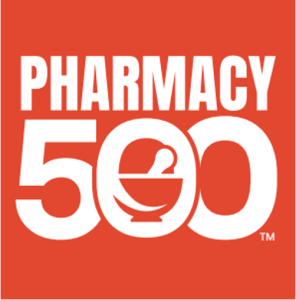
The Importance of Appropriate Code Usage
If you have done any prescription adjudication at all, chances are you have heard the term DAW. The reason that DAW code usage is a major area of focus in pharmacy claim billing is because it plays a significant role in several aspects that can affect your pharmacy’s profits.
What is DAW? Dispense and Written (DAW) is a code that serves to enable the pharmacy to clarify the prescriber’s instructions as it relates to generic substitution of a given medication to the payer. Over time, its use has been expanded to provide a means for the pharmacy to clarify to the payer why they are choosing to dispense a given medication in scenarios where drug availability or patient choice are factors.
Why Does It Matter if DAW Codes are Appropriate? DAW code usage impacts how the payer responds to a claim, and can influence several factors including:
• Reimbursement Impacts: Inappropriate DAW code selection can result in suboptimal payments if the payer reimburses at the generic rate for multi-source branded drugs.
• Audit Impacts: Inappropriate DAW use can trigger audits, and if the required supporting documentation is lacking, the payer can recoup claim reimbursements.
• Formulary Impacts: Inappropriate DAW code use for non-formulary medications can result in higher patient copays.
• Claim Rejection Impacts: Missing or Inappropriate DAW code selection can result in claim rejections, which impacts workflow and reduces efficiency.
So, How Can You Ensure That You Are Utilizing the Correct DAW?
Refer to the DAW code descriptions and tips for usage below. Use this information to develop your pharmacy’s formal DAW policy. Staff training and code usage consistency are important facets of a successful DAW code usage strategy. Veridikal offers several edit options to help manage appropriate DAW code use to ensure accuracy and consistency in this highly audited area.
Dispense As Written (DAW) Codes and Descriptions:
Audit Pro Tip: Veridikal recommends that pharmacies develop a formal DAW code usage policy that reflects the intended and standardized use of codes that staff will be trained to follow. Ask about our free sample DAW policy document that can be used as a template for drafting your own custom policy.
0 = No product selection indicated. DAW not specified: Single-source brand and generic. Audit Pro Tip: Multi Source branded drugs should not be dispensed with a DAW 0, assign the appropriate scenario from codes 1-9 or switch to the generic.
1 = Substitution not allowed by provider. Prescriber requires brand name. Must be clearly identified/documented as such on the prescription in a manner specified by prevailing law.
2 = Substitution allowed- patient requested product dispensed. Patient requests brand name. Document “DAW-2” on the prescription. Be aware that patient co-pay amount may change. Audit Pro Tip: Be consistent in your use of DAW 2 codes for the same patient/same drug.
3 = Substitution allowed- pharmacist selected product dispensed. Document reason for DAW 3 selection on the prescription.
4 = Substitution allowed- generic drug not in stock. This is defined as not in stock or temporarily unavailable from your local wholesaler or usual supplier, not that it is unavailable in the marketplace as a whole. Audit Pro Tip: In an audit scenario you may be asked to show proof that the generic was not available at the time the prescription was dispensed. This could include wholesaler notices/invoices. etc. A good practice is to attach documentation as you go and have it filed with the Rx hardcopy.
5 = Substitution allowed- brand drug dispensed as generic. Note this will typically result in the brand drug being reimbursed at the generic rate.
6 = Override Audit Pro Tip: This code is typically no longer in use, only use when instructed by payer to do so.
7 = Substitution not allowed- brand drug mandated by prevailing law.
8 = Substitution allowed- generic drug not available in marketplace. Generic not manufactured, distributed, or is temporarily unavailable in the marketplace. In this instance, the marketplace is defined as the United States. Audit Pro Tip: Attach a copy of the daily invoice showing you attempted to order the generic, and it was not available from any source.
9 = Carrier/Plan requesting brand. Formulary requires brand name (for some plans). Other plans may require a different DAW code. Follow the direction of the online adjudication to ensure you are using the correct code.
To learn more about Veridikal’s solutions, please visit our website at www.veridikal.com, email us at Sales@Veridikal.com,
or call (888) 975-1432.








